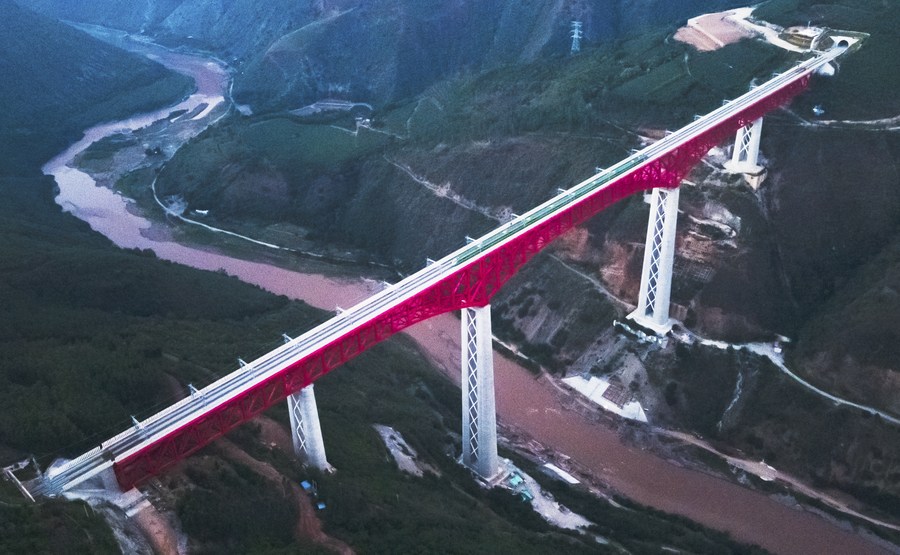By Djoomart Otorbaev
This year marks the 10th anniversary of the global Belt and Road Initiative, first proclaimed by President Xi Jinping during his visit to Kazakhstan in 2013. There are truly unlimited possibilities in the comprehensive cooperation between China and Central Asia. Most critically, an atmosphere of mutual trust has been created over decades of our collaboration.
Now is the time for even deeper economic engagement, which has boundless potential. Significant high-level events between the parties are planned for this year – the first China-Central Asia Summit and the third Belt and Road Forum for International Cooperation, Chinese Foreign Minister Qin Gang said at a press conference on the sidelines of China's annual Two Sessions on March 7.
But in what direction should economic relations between China and Central Asia develop? Is it possible to set any specific benchmarks in this cooperation? In this piece, I want to emphasize that an example of high-impact economic cooperation in Asia already exists and is not far from us – in collaboration between China and countries of the Association of Southeast Asian Nations (ASEAN).
Since 2020, ASEAN countries have become China's main trading partners, surpassing such giants of the world economy as the EU and the U.S. Latest data from China's General Administration of Customs (GAC) showed that last year China's trade with ASEAN reached 6.52 trillion yuan ($949 billion), another impressive increase of 15 percent from a year earlier. China's exports made up 3.79 trillion yuan ($552 billion), an increase of 21.7 percent, and imports made up 2.73 trillion yuan ($397 billion), up 6.8 percent.
A fact that few experts pay attention to is noteworthy. The per capita GDP in ASEAN is $5,700, almost the same as in Central Asia, where it is $5,300. However, how is China's economic relationship with Central Asia developing?
In 2022, China's trade turnover with the countries of Central Asia reached $70.23 billion, an increase of about 40 percent compared to 2021. According to the GAC, trade statistics with China by country in 2022 are as follows. Trade turnover with Kazakhstan amounted to $31.17 billion, which is 23.6 percent higher than the previous year, with the Kyrgyz Republic at $15.50 billion, with an increase of 5 percent, with Tajikistan at $2.6 billion with an increase of 40.4 percent, with Turkmenistan at $11.18 billion with an increase of 52 percent, and with Uzbekistan at $9.78 billion with a rise of 21.8 percent. Besides, China has become the largest investor in the Kyrgyz Republic and Tajikistan, the second largest in Uzbekistan, and the fourth largest in Kazakhstan.
Naturally, ASEAN and Central Asia differ significantly in population and size of economies. The population of the ASEAN member countries is more than 680 million people, while the countries of Central Asia are almost nine times smaller, at only 76 million. But even considering such objective factors, the quality of China's interaction with the ASEAN countries should undoubtedly serve as an example of its cooperation with the countries of Central Asia.
Moreover, the structure of trade with Central Asia remains one-sided, and its export to China consists mainly of oil and gas supplies. Therefore, much work must be done to increase and diversify trade turnover in the coming years.
An excellent example of constructing the planned China-Kyrgyzstan-Uzbekistan railway, which will pass through the complicated mountainous landscape, is the China-Laos high-mountain railway commissioned at the end of 2021.

An electric multiple unit (EMU) train of the China-Laos railway crossing a major bridge over the Yuanjiang River in southwest China's Yunnan Province, December 3, 2021. [Photo/Xinhua]
This electrified railway, capable of carrying passengers and goods, has a length of 1035 kilometers, including 422 km in Laos, from Kunming in southwest China's Yunnan Province to the capital of Laos, Vientiane. It reduced travel time between the two cities to around 10 hours. Bullet trains move at 160 km per hour, crossing mountainous areas. In total, 167 tunnels and 301 bridges were built on new sections of the railway with a length of more than 900 km.
Given the preceding, I believe there is a clear need for a regular trilateral China-ASEAN-Central Asia dialogue. In this format, the meeting participants could exchange concrete experiences in economic and investment cooperation, thus enriching each other. An ideal platform for such a discussion could be the existing Boao Forum for Asia.
In addition, to share valuable experiences, various forums should be organized in the countries. In 2023, Asian economies will contribute up to 75 percent of global growth, according to the International Monetary Fund. Close cooperation among Asian countries and regions is becoming an obvious necessity.
Djoomart Otorbaev is a former Prime Minister of the Kyrgyz Republic, a professor of the Belt and Road School of Beijing Normal University, and the author of the book "Central Asia's Economic Rebirth in the Shadow of the New Great Game"(Routledge, February 2023).

 中文
中文



